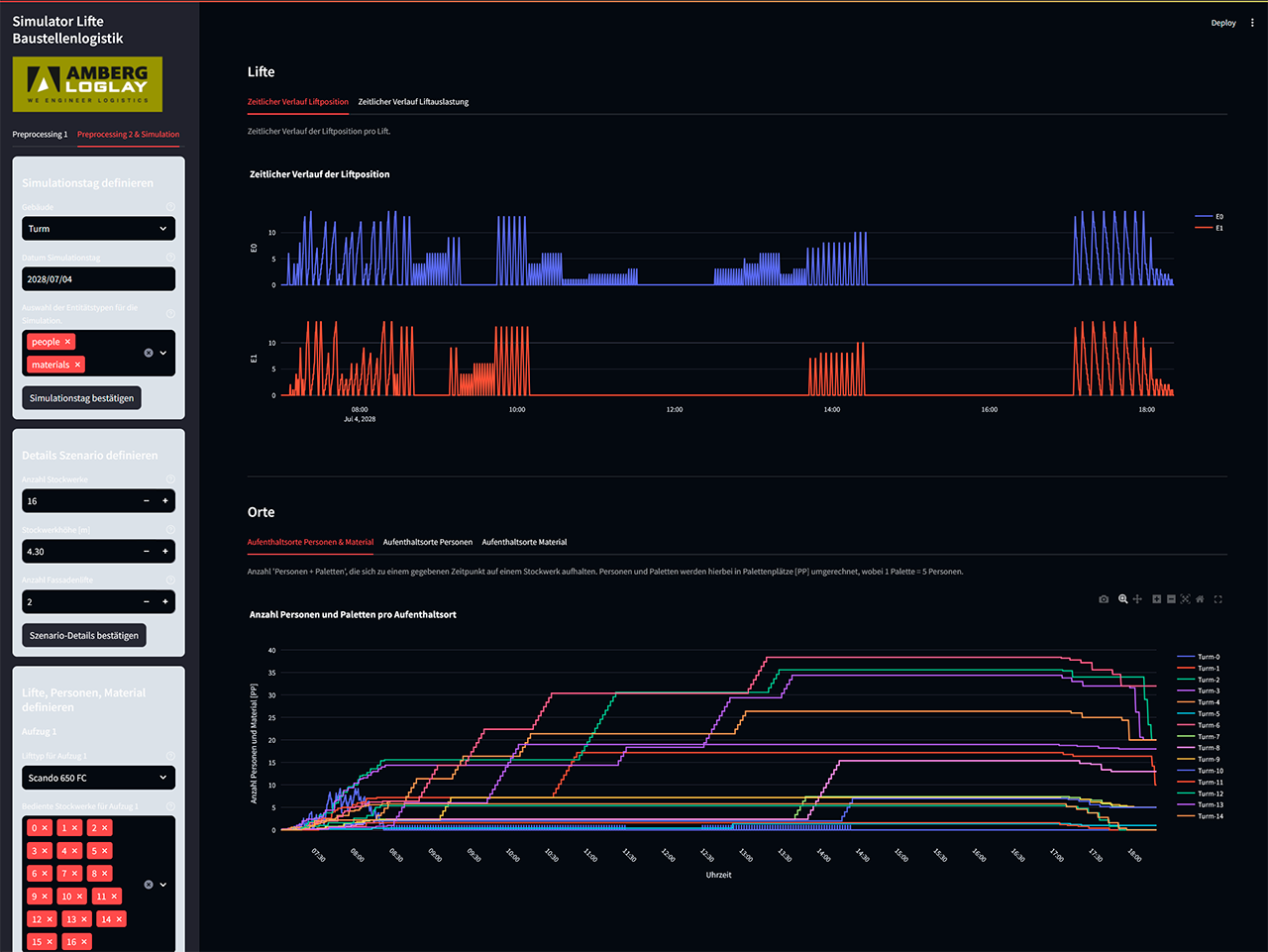1. Because the smart city flows
Lower, correct inventories, error-free and reliable processes, less waste, no delays, no accidents. What sounds like a production plant and dröger logistics has an impact on our life in the city. Space consumption, emissions and noise are the negative effects of large construction sites in the city — but we want and need new, modern buildings or energy-efficient buildings that have already been built. Fluent construction logistics combines these two contradictions.
2. Because space is scarce in urban areas
When building high-rise buildings and building complexes in a converted area, there is little space to store materials on site. The smooth flow of construction logistics is therefore essential. Internet of Things (IoT), intelligent sensors in and around construction, but in particular the BIM2LOG approach by Amberg Loglay ensure that logistics work just-in-time: The right material is delivered to the right place at the right time, in the right quality. Off-site prefabrication can be used: components are assembled outside, prepared and brought to the construction site as soon as they are needed.

3. Because scarcity and high prices are also bothering the construction site
When materials, energy and personnel are scarce and prices are high, there is only one thing: be economical. Without compromises, this is only possible in construction with digital tools. Anyone who uses clever tools for logistics planning and combines them with 3D models is the best way to do this. Data analyses are just as useful when it comes to saving. They help, for example, to determine exact quantities and to group the different components. The BIM2log method from Amberg Loglay combines exactly these techniques.
4. Because recycling works better digitally on construction sites
Throw all rubbish into a trough and throw it away — that was once upon a time. Today, sustainability requirements in construction have increased, which of course also affects the disposal of waste. Smart recycling is done in smart cities. For example, logistics experts set up roll containers for recycled material on the construction site. The fine separation of the waste is then carried out later in the logistics hub. And: Thanks to digital planning, a truck never leaves the construction site empty. On the way there, he delivers new material, and on the way back, he takes the recycled goods with him. The result is the digital disposal certificate and thus also another data set that makes the planning of the next project more precise and shows further optimization potential.
5. Because the city of the future is sustainable
Construction logistics enables trucks to travel to construction sites up to 40% less frequently and at more appropriate times. As a result, construction causes significantly less noise, traffic jams and exhaust gases. How does that work? With consistent digital planning and logistics hubs. These central transshipment points serve as collection points for deliveries of material, which from there is efficiently distributed to construction sites. Eco-friendly and quiet electric trucks can be used on these transport routes. To the delight of city dwellers and other road users.
<span class="white-box">
The smart city explained in a nutshell
There is currently no generally valid definition of the term smart city. Yet more and more cities are communicating that they are on their way to becoming a smart city. The idea behind this is to overcome the challenges of the future: population growth, climate change, energy supply and so on. How can the goods and services of daily life be made available at the right time and at the same time achieve ecological and social improvements? The solution is intelligent structures that are digitally connected. As a result, energy and water supply, mobility and communication networks interact with each other to become more efficient, effective and resilient. An Internet of Things is being created.
</span>



